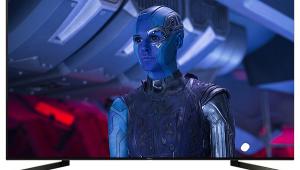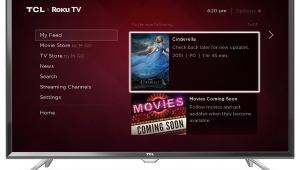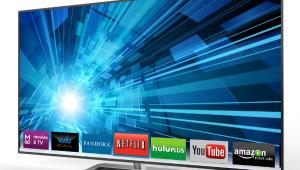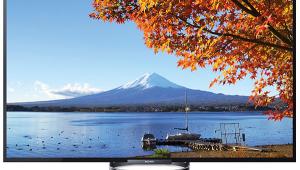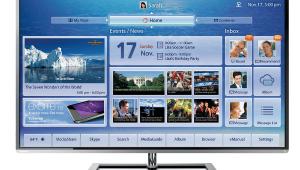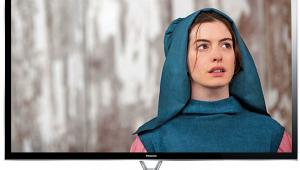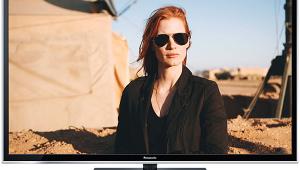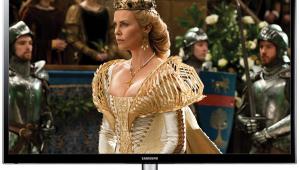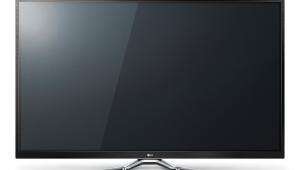I would love to love this tv. But, until Samsung begins to even acknowledge brightness pops and the continuous gray bars in letter box washing out, I won't ever buy another one from them. I currently have the 59d8000, but I also have the panasonic vt60 64 inch. Probably the best picture I've ever seen with the Panasonic.
Samsung PN60F8500 3D Plasma HDTV
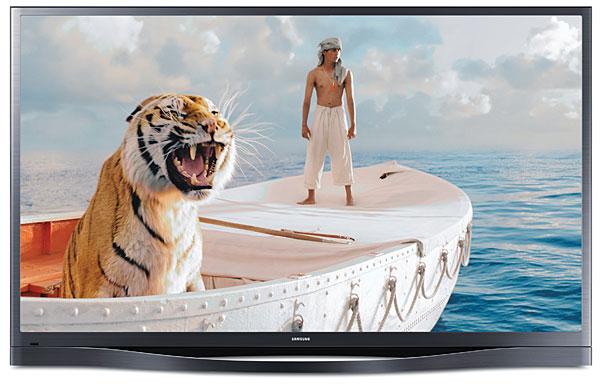
Price: $3,150 At A Glance: Crisp, detailed picture • Superb color performance • Near reference-quality blacks and shadow detail
When Samsung launched its new line of plasma HDTVs at last January’s CES, we were impressed. Those early demos indicated improved black levels and overall good performance. We were surprised to find later that the prices, though not exactly “Attention, K-Mart shoppers!” specials, aren’t Beverly Hills exclusives, either. From what we see here, these new Samsung plasmas, while unlikely to alter the market dominance of LCD, are welcome additions to the battle.
Description
Samsung’s 60-inch PN60F8500 is one of three models in the company’s 8500 flagship plasma line. There are also 51-inch and 64-inch F8500 models, at $2,000 and $4,400, respectively. Don’t take the MSRPs too seriously; we’ve already seen these sets on sale, even on Samsung’s Website, for hundreds of dollars less.
The PN60F8500 is a relatively thin design, though not trendsettingly thin. The stylish and reassuringly solid metal designer stand does not rotate. The inputs are on the back, but most of them are close enough to the edge that it was hard to keep them from poking out and becoming visible from the front. Consider an HDMI right angle adapter or two (not supplied) if you’re hanging the set and the cosmetics are critical.
One visitor to our studio also heard a very high-pitched buzz coming from the panel that had escaped my notice (not from a cooling fan—there don’t appear to be any). Some degree of panel buzz is common with plasmas, but the level and pitch may vary; here it was subtle enough to be drowned out by any reasonable level from the program sound. The set’s own audio, incidentally, was above average and tolerable for non-critical viewing.
Samsung’s new Super Contrast Panel, with its Real Black Pro filter, is said to improve brightness enough to challenge LED HDTVs. While that claim may be something of a stretch, it is capable of somewhat more brightness than many plasmas we’ve tested, and it’s comfortably bright for any reasonable viewing conditions.
There are five picture modes plus the usual picture adjustments. One of these, Cell Light, is roughly comparable to Backlight on an LCD set. It adjusts the drive to the panel and can move the entire brightness range up or down. The Advanced Settings menu includes two separate sets of white balance controls for gray-scale calibration. White Balance is a two-step control—gain (high) and offset (low). The 10p White Balance (accessible only in the Movie picture mode, and then only in 2D) can tweak the gray scale at 10 points across the brightness range for more precise tuning. Both sets of controls can be used together; the most efficient technique is to calibrate first with the two-point adjustments, then fine-tune as needed with the 10-point controls.
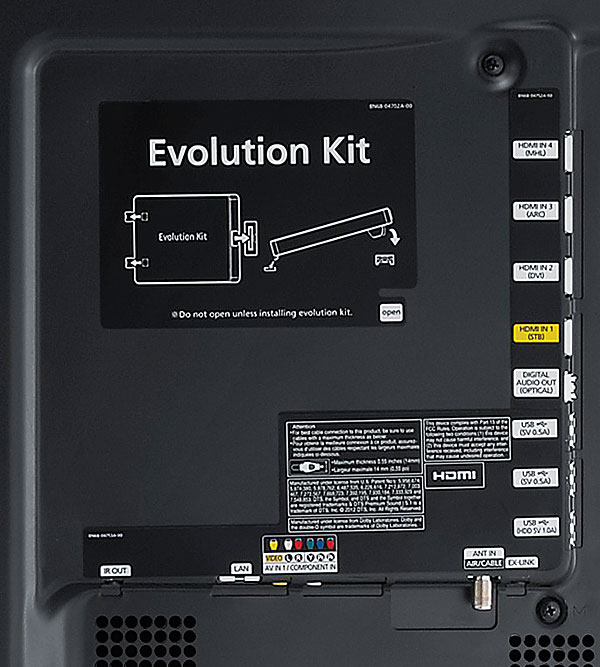
The Color Space control is what most manufacturers call a color management system (CMS). Its Custom setting provides full control over the set’s primary (red, green, blue) and secondary (cyan, magenta, yellow) colors for finetuning the color gamut, essentially the outer limits of the TV’s color palette. There’s also a seven-position Gamma control, Dynamic Contrast, an RGB Only selection useful for setting the Color and Tint controls (it shuts off any two of the three primary colors), and two built-in test patterns.
If you want the most accurate image, the Advanced Settings that are best left off are Black Tone, Flesh Tone, and Motion Lighting.
A Color Tone control in the Picture Options menu offers several color temperature selections from which to start tuning the white balance. I used Warm2 pre-calibration as the baseline for a full calibration. A Motion Judder Canceller, with three positions (Standard, Smooth, and Off), is similar to the motion-smoothing feature found in LCD sets and has the same downside: It alters film to look like video—the soap-opera effect—in either of its active positions. There’s also an MPEG Noise filter should you need it (I never did). The 3D controls include the usual suspects, including a 2D-to-3D conversion mode. The set comes with four sets of lightweight, comfortable, battery-powered (not rechargeable) active 3D glasses. Extras will run you $20 per pair.
All of the expected Internet features are included in Samsung’s new Smart Hub menu. You can stream movies and TV shows either wired or wirelessly, download apps, surf the Web to your heart’s content, or visit your favorite social sites. A built-in, retractable camera at the top of the screen facilitates these applications, can be used for Skype calls, and even has facial recognition capabilities.
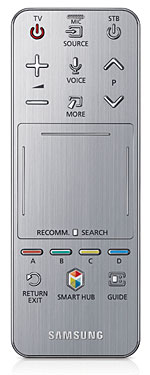 The set also includes a port for Samsung’s Evolution Kit, designed to offer future hardware updates as they become available. There are inevitable limits, of course, to what such updates can accomplish. Don’t, for example, expect an Evolution Kit that turns the PN60F8500 into a 4K set! But this feature should allow the set to keep up somewhat with future advances in the user interface and streaming features.
The set also includes a port for Samsung’s Evolution Kit, designed to offer future hardware updates as they become available. There are inevitable limits, of course, to what such updates can accomplish. Don’t, for example, expect an Evolution Kit that turns the PN60F8500 into a 4K set! But this feature should allow the set to keep up somewhat with future advances in the user interface and streaming features.
Samsung’s new Smart Touch (remote) Control probably deserves more than the few words I can spare for it. Apart from a few hard buttons, its functions are triggered from a trackpad, which too often had me overshooting the mark for my desired settings. It’s also relatively small and a constant threat to disappear into the bottomless pit of your sofa cushions. I kept hitting the side-mounted Mute button when I didn’t want to. While I became familiar with the operation of this remote soon enough, I never exactly fell in love with it.
Some of the Samsung’s features can also be operated by specific voice commands or hand gestures. I was able to get the hand gesture control to work, though awkwardly at best, but was not able to effectively interface with voice control. The latter appears to have a limited range of control options and also requires an Internet connection. Several days earlier, I had been able to establish a temporary wired link to the Web to check out the set’s Internet apps, but when I tried again during the voice recognition test, the link-up could not be made—though I was able to concurrently establish an Internet connection (with some difficulty) to both my computer and the Sony XBR-65X900A Ultra HDTV. But unless you’re more into gadgets than performance, neither gesture nor voice control, useful or not, should be important enough to make or break a possible purchase decision.
2D Performance
The PN60F8500 passed all of our standardized video processing tests apart from 3:2 SD, where it didn’t hold a good lock to the source cadence. Like most HDTVs, the Samsung does not pass HDMI-fed Dolby Digital or DTS signals from its TosLink audio output but rather converts them to two-channel PCM—a limitation for getting the most out of some outboard soundbars.
- Log in or register to post comments

robbi1121, I was the first one to discover the brightness pops and personally reported it to Samsung engineers. Samsung was able to repeat and see the problem in their lab, acknowledged it and completely fixed the brightness fluctuations in early May with firmware 1102, last week further enhancements were released with firmware 1104.
Regarding the cropping bars I've personally seen more than 60 F8500s that we professionally calibrated and have not seen grey cropping bars. We put a Klein 10 meter on the CinemaScope 2.35:1 bars and the MLL was measured at .00167fL, which is very dark.
I agree that Panasonic's VT60 is an excellent display, but suggest you take another look at the F85000 that is properly set-up and in a good viewing environment, I think you will like what you see.
-Robert

Tom, love your review, very accurate and well written.
-Robert


This may be a question for Robert Zohn or Rob Sabin, but does anyone know whether the PN64F8500, which competed against the Panasonic TC-P65ZT60 and TC-P65VT60 in the Value Electronics HDTV Shooutout, had the "Black Optimizer" enabled or not?
The "Audience" and especially the "Experts" rated the black level of the Samsung to be worse than the Panasonic's, and then when the Panasonic's were compared to the Kuro, it was noted there is still a way to go.
Yet Thomas in this review has stated that in comparison to his Kuro the black level ranges from "couldn’t quite keep up" to "essentially indistinguishable."

MODEL BLACKS WHITES CONTRAST
Samsung F8500 (0.0017ft/L) (214.74) = 126,317:1
Panasonic ZT60 (0.0011ft/L) (114.90) = 104,454:1
Panasonic VT60 (0.0012ft/L) (81.90) = 68,250:1

No one argues that the Samsung isn't capable of a higher peak brightness than the Panasonics. If you do most of your viewing in a very bright room this might be important. But a brightly lit room will dramatically increase the measurable black level and make the contrast ratio that was measured in a dark room irrelevant.

First, I have to say thanks everyone for their insight.
My wife has ordered me this television, as a surprise. I'm looking forward to it showing up. I know these settings are calibrated for watching a movie in a dark room, but what should I change for optimal sports viewing? Most of our Saturday afternoons are spent watching football games, and our teams seem to always have the 3:00pm game.

